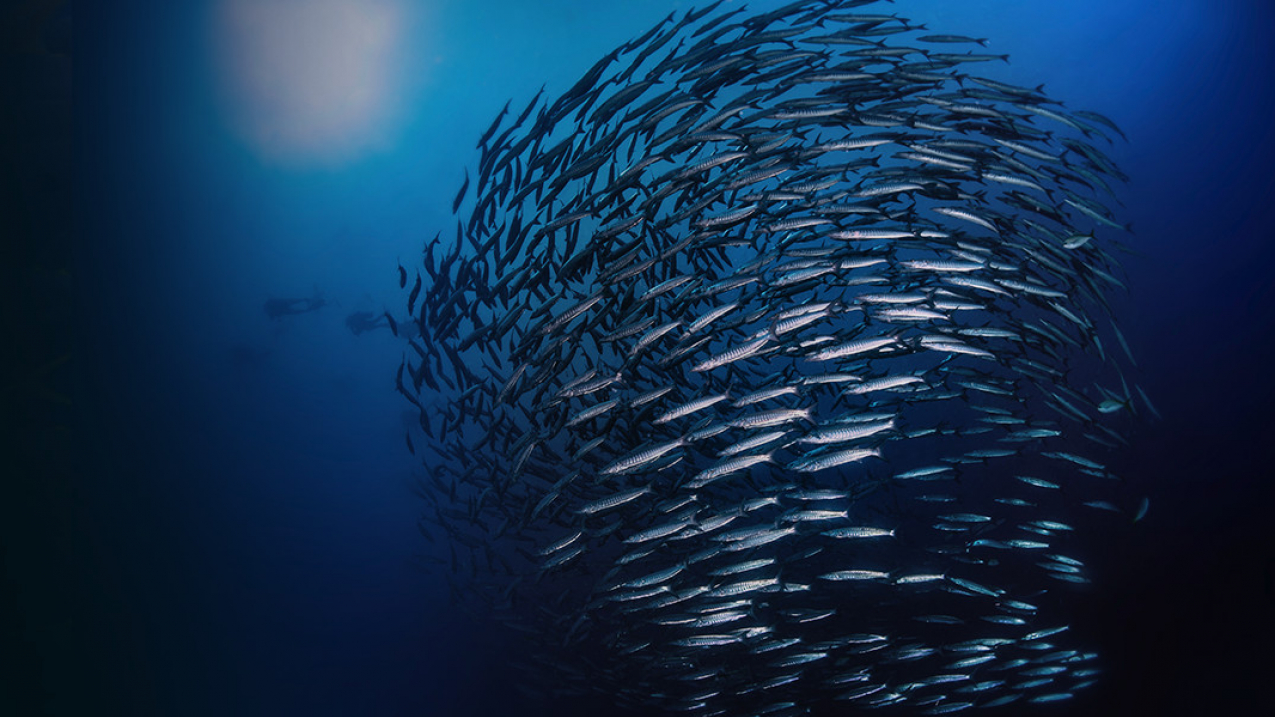Improved Fisheries
Improved fisheries management is crucial for addressing the impact of overfishing on climate change, preserving marine ecosystems, and maintaining the ocean's ability to sequester carbon.

Image credit: Source Name
job openings
View open jobs in this Solution
Example Companies
- Global Aquaculture Alliance - Promotes responsible aquaculture practices worldwide.
- Marine Stewardship Council - Sets standards for sustainable fishing and seafood traceability.
- Seafood Watch - Helps consumers and businesses choose sustainable seafood.
- Oceana - Advocates for science-based fishery management and marine conservation.
- FishWise - Promotes the health of ocean ecosystems through environmentally and socially responsible business practices.
Overview
Improved fisheries management addresses the impact of overfishing on climate change. Depleted fish stocks disrupt ecosystems, and overfishing hampers the ocean's carbon sequestration ability, exacerbating climate change.
Learn More
Progress Made
Significant advancements have been made in improving fisheries management:
- Aquaculture: Development of sustainable fish farming practices.
- Fish Stock Management: Implementation of science-based quotas and fishing limits.
- Seafood Traceability: Technologies to track seafood from catch to consumer.
Solutions by Sector
Wild Capture Fisheries
- Sustainable Fishing Practices: Implementing gear modifications and fishing techniques to reduce bycatch.
- Marine Protected Areas: Establishing no-take zones to allow fish populations to recover.
- Stock Assessments: Conducting regular scientific assessments to inform fishing quotas.
Case Studies:
- Alaska Pollock Fishery: Implemented ecosystem-based management, leading to sustainable harvests (NOAA Fisheries).
- Maldives Pole and Line Tuna: Achieved MSC certification for sustainable fishing practices (Marine Stewardship Council).
- Baltic Cod Recovery Plan: EU-wide effort to restore cod stocks through quotas and gear restrictions (European Commission).
Aquaculture
- Sustainable Feed: Developing alternative feed sources to reduce reliance on wild-caught fish.
- Integrated Multi-Trophic Aquaculture: Combining species that benefit from each other's presence.
- Recirculating Aquaculture Systems: Closed-loop systems that minimize environmental impact.
Case Studies:
- Kvarøy Arctic Salmon: Implemented sustainable feed and achieved ASC certification (Aquaculture Stewardship Council).
- GreenWave 3D Ocean Farming: Developed a model for sustainable seaweed and shellfish farming (GreenWave).
- Veta la Palma: Created a wetland ecosystem for sustainable fish farming in Spain (Veta la Palma).
Seafood Supply Chain
- Blockchain Traceability: Implementing blockchain technology for transparent seafood tracking.
- Sustainable Sourcing: Developing procurement policies that prioritize sustainably caught or farmed seafood.
- Consumer Education: Providing information to help consumers make sustainable seafood choices.
Case Studies:
- Bumble Bee Foods Blockchain Initiative: Implemented blockchain traceability for tuna products (Bumble Bee Foods).
- Walmart Sustainable Seafood Policy: Committed to sourcing all seafood from sustainable sources (Walmart).
- Monterey Bay Aquarium Seafood Watch: Developed a consumer guide for sustainable seafood choices (Seafood Watch).
Lessons Learned
- Clear and Achievable Goals: Setting specific, measurable objectives is vital for success.
- Comprehensive Plan: A well-structured implementation strategy is needed for effective management.
- Stakeholder Engagement: Involvement from all parties, including fishers, regulators, and conservationists, is essential.
- Monitoring and Evaluation: Tracking progress and results is crucial for adaptive management.
Challenges Ahead
- Scaling Challenges: Overcoming obstacles for broader adoption of sustainable practices.
- Awareness and Support Gap: Increasing public and policy-maker awareness of the importance of sustainable fisheries.
- Technical Challenges: Improving efficiency and developing more eco-friendly fishing and aquaculture methods.
- Climate Change Impacts: Adapting management strategies to account for changing ocean conditions.
Best Path Forward
- Research and Development: Invest in ongoing innovation for sustainable fishing and aquaculture technologies.
- Large-scale Adoption: Promote widespread use of proven sustainable practices and technologies.
- Continuous Monitoring: Evaluate performance and make adjustments based on scientific data.
- Public Education: Highlight the benefits of sustainable fisheries and encourage consumer support.
- Policy Support: Advocate for and implement policies that promote sustainable fisheries management.
Image credit: Source Name